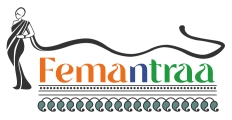Hand Block Printing
Imprints of Tradition: Journeying through the Craft of Hand Block Printing
What is Hand Block Printing?
The art of hand block printing, an ancient technique dating back over 2000 years, is a mesmerizing dance of culture and craftsmanship. Originating in India, particularly in communities in Rajasthan, Gujarat, and Andhra Pradesh, this art form involves meticulous processes handed down through generations.
The process begins with an artisan curating a design on paper, which is then transferred to a wooden block and carefully hand-carved. Each block dipped in vegetable-based color dyes, is applied to the fabric layer by layer, demanding steady hand-eye coordination.
Each block print design, inspired by local sources, falls into floral, geometric, or figurative categories. Astonishingly, designs can utilize up to 30 blocks, each representing a separate color in the intricate pattern.
Types of Block Printing Techniques
- Ajrak
Ajrak is an Indian Print whose name is derived from the Arabic word Azrak, which means Blue, as Indigo is one of the predominant colors used in this technique. It is one of the oldest printed fabrics known to mankind. Origins in Rajasthan & Gujrat.
- Bagh
Bagh is a unique style of block printing on handloom textiles. It is practiced on a white background with red and black prints on it. The chemical properties of the local river Bagh, enhance the unique shades and make them prominent. Origins in Rajasthan.
- Kalamkari
Kalamkari is a type of hand-painted cotton textile produced in the Indian state of Andhra Pradesh. Only natural dyes are used in Kalamkari, which involves twenty-three steps. There are two distinctive styles of Kalamkari art in India – Machilipatnam style and Srikalahasti style. Kalamkari is a hand block printing method native to Andhra Pradesh and is characterized by floral forms with thin black outlines. They are influenced by Persian art. Apart from the cotton fabric, Kalamkari is also done over the silk fabric. The hand paintings are done with a tamarind pen using natural dyes.
- Dabu
Dabu block printing is a resist printing technique. It is done with dabu paste, which is a mixture of Clay, guar gum, and sawdust, which is then block printed onto the fabric and then dyed. Rajasthan, India.
- Khadi
Traditionally made with the dust of precious metals such as gold and silver, Khadi printing resembles ornaments, ideally for festivities and auspicious occasions such as weddings. Unlike other methods, this is a surface ornamentation technique and, hence, is done on fully finished textiles.
- Sanganeri
The uniqueness of the Sanganeri block printing is the fact that it is supported by natural factors like the local water, atmosphere, humidity, and the indigenous herbs and flowers used in the process. These prints borrow their designs from nature and are intricately designed. Sanganeri prints are normally done on a bright white background. These prints mostly include flowers and floral motifs inspired by the flora and fauna of Sanganer.
- Batik
The Indonesian Batik also has a block-printed version where the wax is printed onto the fabric using a copper stamp called a Cap. The printed wax resists the dyeing process to create gorgeous designs.
- Bagru
This technique is completely natural, right from the wooden blocks to the natural dyes, and is known for its effortless elegance and simplicity. Bagru prints combine natural organic designs with geometric motifs to create beautiful patterns. In the Bagru printing method, the base cloth is prepared with Fuller's earth and turmeric. Then, natural dyes like alum, indigo, and pomegranate flowers are used in printing. Bagru is characterized by its distinctive off-white or beige base cloth color, from the Fuller's earth that was smeared on it during the preparation.
These diverse block printing techniques weave a vibrant tapestry, echoing India's rich cultural heritage and the skilled hands that bring these intricate designs to life.

